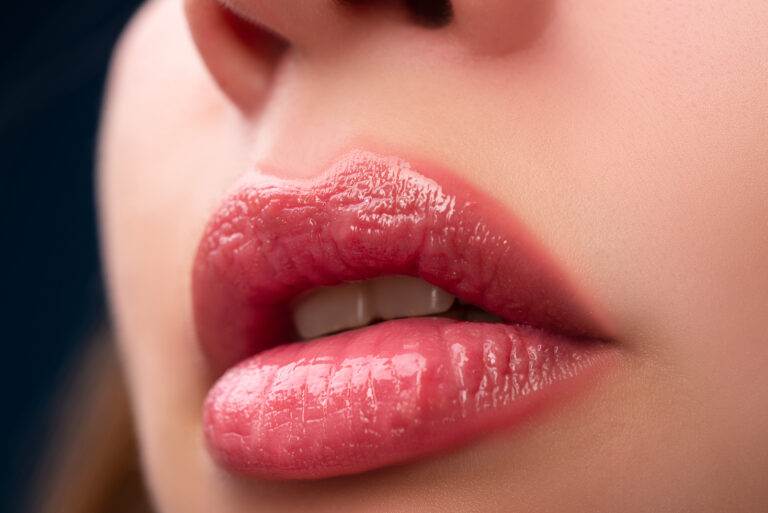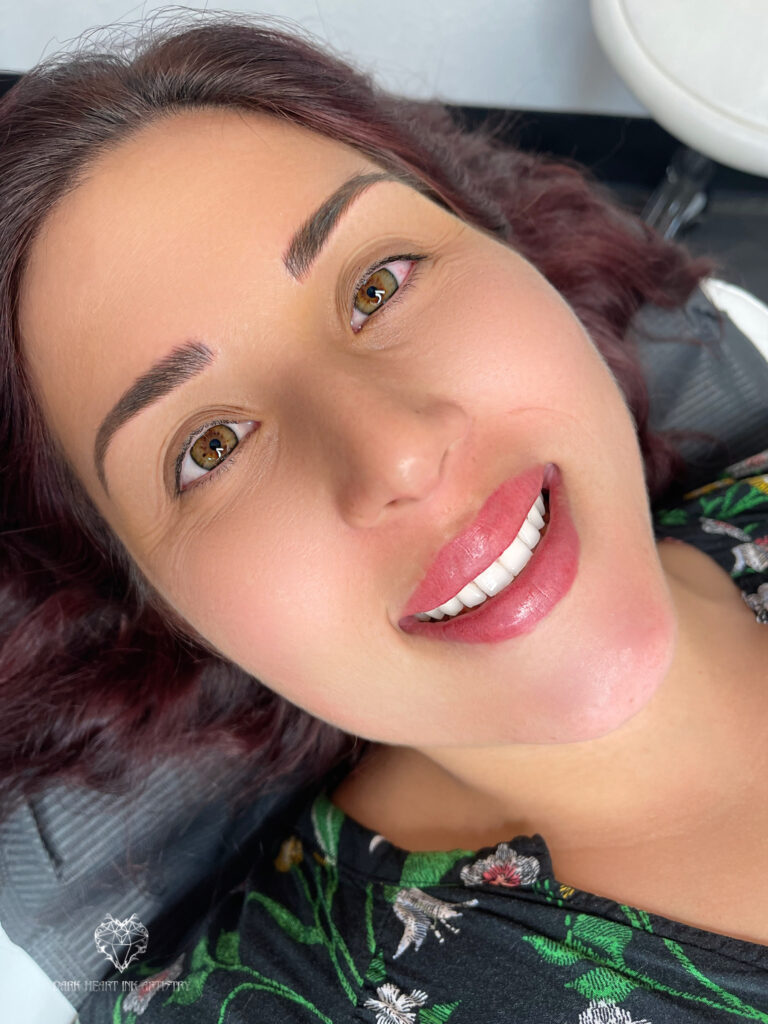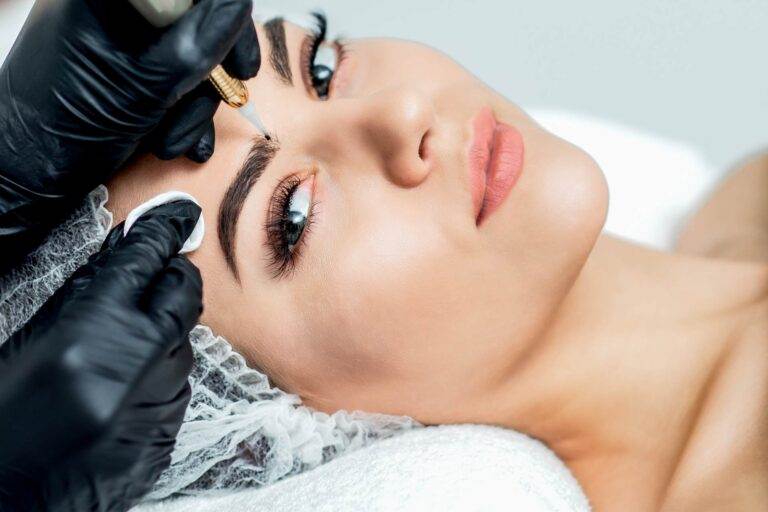Choosing the right lip blush shade is crucial for achieving a flawless and polished look. Lip blush is a popular cosmetic procedure that enhances the natural color and shape of the lips. It can add a touch of color and definition, making your lips appear fuller and more youthful. However, selecting the wrong shade can have the opposite effect, making your lips look unnatural or unflattering. In this article, we will explore the importance of choosing the right lip blush shade and provide tips on how to select the perfect color for your skin tone and undertones.
Understanding the Undertones of Your Skin
Before diving into lip blush color selection, it is important to understand the concept of undertones. Undertones are the subtle hues that lie beneath the surface of your skin and can greatly influence how certain colors appear on you. There are three main undertone categories: warm, cool, and neutral.
Warm undertones have a yellow or golden hue, while cool undertones have a pink or blue undertone. Neutral undertones have a mix of both warm and cool tones. Determining your skin’s undertones can help guide you in selecting lip blush shades that will complement your complexion.
To determine your undertones, there are a few simple tests you can try. One method is to look at the veins on your wrist. If they appear greenish, you likely have warm undertones. If they appear bluish or purplish, you likely have cool undertones. Another method is to hold up silver and gold jewelry against your skin. If silver looks better on you, you likely have cool undertones, while if gold looks better, you likely have warm undertones.
The Importance of Choosing the Right Lip Blush Shade
Choosing the right lip blush shade is essential for enhancing your overall look. The right shade can brighten your complexion, make your lips appear fuller, and even make your teeth look whiter. On the other hand, the wrong shade can clash with your skin tone, making your lips look unnatural or even dull.
One common mistake is choosing a lip blush shade that is too light or too dark for your skin tone. If the shade is too light, it can wash out your complexion and make you look pale. If the shade is too dark, it can create a harsh contrast and make your lips appear smaller.
Another consideration is how the lip blush shade interacts with the color of your teeth. Certain shades, such as those with blue undertones, can make your teeth appear yellow. It is important to choose a lip blush shade that complements the natural color of your teeth to ensure a bright and radiant smile.
Tips for Selecting the Perfect Lip Blush Color
When selecting a lip blush shade, there are several factors to consider. First, take into account your natural lip color. If you have naturally pigmented lips, you may want to choose a shade that is similar to your natural lip color for a more subtle and natural look. If you have lighter or less pigmented lips, you may opt for a slightly darker shade to add more definition.
Next, consider your personal style and preferences. Are you someone who likes bold and vibrant colors, or do you prefer more muted and natural shades? Lip blush comes in a wide range of colors, from soft pinks and nudes to bold reds and berries. Choose a shade that aligns with your personal style and makes you feel confident.
It is also important to consider your skin tone and undertones when selecting a lip blush shade. Warm-toned individuals tend to look best in shades with warm undertones, such as coral, peach, or brick red. Cool-toned individuals, on the other hand, tend to look best in shades with cool undertones, such as berry, plum, or mauve. Neutral-toned individuals have the flexibility to experiment with both warm and cool shades.
How to Determine Your Skin Tone
Determining your skin tone is an important step in selecting the right lip blush shade. There are three main skin tone categories: warm, cool, and neutral.
Warm skin tones have a yellow or golden undertone and tend to tan easily. If you have warm skin tones, you may notice that gold jewelry looks more flattering on you than silver. Warm-toned individuals also tend to have veins that appear greenish on their wrists.
Cool skin tones have a pink or blue undertone and tend to burn easily in the sun. If you have cool skin tones, you may notice that silver jewelry looks more flattering on you than gold. Cool-toned individuals also tend to have veins that appear bluish or purplish on their wrists.
Neutral skin tones have a mix of both warm and cool undertones. If you have neutral skin tones, you may find that both gold and silver jewelry look equally flattering on you. Neutral-toned individuals also tend to have veins that appear bluish-green on their wrists.
Matching Your Lip Blush to Your Natural Lip Color

Matching your lip blush shade to your natural lip color can create a more natural and flattering look. If you have naturally pigmented lips, choosing a shade that is similar to your natural lip color can enhance your lips’ natural beauty without looking too dramatic.
For those with lighter or less pigmented lips, opting for a slightly darker shade can add more definition and make your lips appear fuller. However, it is important to choose a shade that still looks natural and complements your overall complexion.
When selecting a lip blush shade, consider the undertones of your natural lip color as well. If your lips have warm undertones, choose a lip blush shade with warm undertones, such as coral or peach. If your lips have cool undertones, opt for a lip blush shade with cool undertones, such as berry or mauve.
Choosing Lip Blush Shades for Warm Skin Tones
If you have warm skin tones, there are several lip blush shades that can complement your complexion. Warm-toned individuals tend to look best in shades with warm undertones, such as coral, peach, or brick red.
Coral shades can add a vibrant and youthful touch to warm skin tones. They can brighten up the complexion and make the lips appear fuller. Peach shades, on the other hand, can create a soft and natural look. They can enhance the warmth of the skin tone and add a subtle pop of color.
For those who prefer a bolder look, brick red shades can be a great option. They can create a striking contrast against warm skin tones and make the lips stand out. Brick red shades with orange undertones can be particularly flattering for warm-toned individuals.
Finding the Best Lip Blush Colors for Cool Skin Tones
If you have cool skin tones, there are several lip blush shades that can complement your complexion. Cool-toned individuals tend to look best in shades with cool undertones, such as berry, plum, or mauve.
Berry shades can add a touch of drama and sophistication to cool skin tones. They can create a striking contrast against the complexion and make the lips appear more defined. Plum shades, on the other hand, can create a softer and more romantic look. They can enhance the coolness of the skin tone and add a subtle pop of color.
For those who prefer a more muted look, mauve shades can be a great option. They can create a natural and effortless look that complements cool skin tones. Mauve shades with pink undertones can be particularly flattering for cool-toned individuals.
The Dos and Don’ts of Lip Blush Color Selection
When selecting a lip blush shade, there are a few dos and don’ts to keep in mind to ensure a natural and flattering look.
Do consider your skin tone and undertones. Choosing a lip blush shade that complements your complexion can enhance your overall look and make your lips appear more vibrant.
Do take into account your natural lip color. Matching your lip blush shade to your natural lip color can create a more natural and seamless look.
Do experiment with different shades. Trying out different lip blush shades can help you find the perfect match for your skin tone and personal style.
Don’t choose a shade that is too light or too dark for your skin tone. Opt for a shade that is similar to your natural lip color or slightly darker for a more flattering look.
Don’t forget to consider the undertones of the lip blush shade. Choosing a shade with undertones that complement your skin tone can create a more harmonious and balanced look.
Don’t be afraid to seek professional advice. If you are unsure about which lip blush shade to choose, consult with a professional makeup artist or aesthetician who can provide personalized recommendations.
Experimenting with Different Lip Blush Shades
Experimenting with different lip blush shades is key to finding your perfect match. There are several ways you can try out different shades to see what works best for you.
One option is to visit a makeup counter or beauty store and swatch different lip blush shades on your hand or arm. This can give you an idea of how the colors look against your skin tone. However, keep in mind that the color may appear slightly different on your lips compared to your hand or arm.
Another option is to try on different lip blush shades at home. Many beauty brands offer sample sizes or mini versions of their lip blush products, which allow you to test out the colors before committing to a full-size product. Apply the lip blush shades on your lips and observe how they look in different lighting conditions.
You can also experiment with layering different lip blush shades to create custom colors. Mixing and blending different shades can help you achieve a unique and personalized look that suits your skin tone and personal style.
Enhancing Your Lip Blush with Complementary Makeup Colors
Pairing your lip blush with complementary makeup colors can create a cohesive and polished look. The right combination of makeup products can enhance the lip blush shade and make your overall look more put-together.
For warm-toned lip blush shades, consider pairing them with warm-toned eyeshadows, such as golds, bronzes, or warm browns. These colors can create a harmonious and balanced look that complements your warm skin tone.
For cool-toned lip blush shades, consider pairing them with cool-toned eyeshadows, such as silvers, grays, or cool browns. These colors can create a cohesive and sophisticated look that complements your cool skin tone.
When it comes to blush and bronzer, choose shades that complement your lip blush color. For warm-toned lip blush shades, opt for peachy or bronzy blushes. For cool-toned lip blush shades, opt for pink or mauve blushes. This can create a seamless and coordinated look that ties everything together.
Choosing the right lip blush shade is essential for achieving a natural and flattering look. Understanding your skin’s undertones and selecting a shade that complements your complexion can enhance your overall appearance and make your lips appear more vibrant.
When selecting a lip blush shade, consider factors such as your natural lip color, personal style, and skin tone. Experimenting with different shades and seeking professional advice can help you find the perfect match for you.
Remember to also consider complementary makeup colors to enhance your lip blush shade and create a cohesive look. By following these tips and guidelines, you can confidently select a lip blush shade that works for you and enhances your natural beauty.
FAQs
What is lip blush?
Lip blush is a semi-permanent cosmetic tattoo that enhances the natural color and shape of the lips.
How do I choose the perfect shade for my skin tone?
When choosing a lip blush shade, consider your skin tone and undertones. Generally, warm skin tones look best with peachy or coral shades, while cool skin tones look best with pink or berry shades.
Can I customize the shade of my lip blush?
Yes, you can customize the shade of your lip blush to your liking. Your technician can mix different pigments to create a shade that complements your skin tone.
How long does lip blush last?
Lip blush typically lasts between 2-3 years, depending on factors such as skin type, lifestyle, and aftercare.
Is lip blush painful?
Lip blush can be uncomfortable, but most technicians use a numbing cream to minimize pain during the procedure.
What is the aftercare for lip blush?
After getting lip blush, avoid getting the area wet for at least 24 hours and avoid using any lip products for the first week. Apply a healing ointment as directed by your technician and avoid direct sunlight and tanning beds for at least two weeks.






